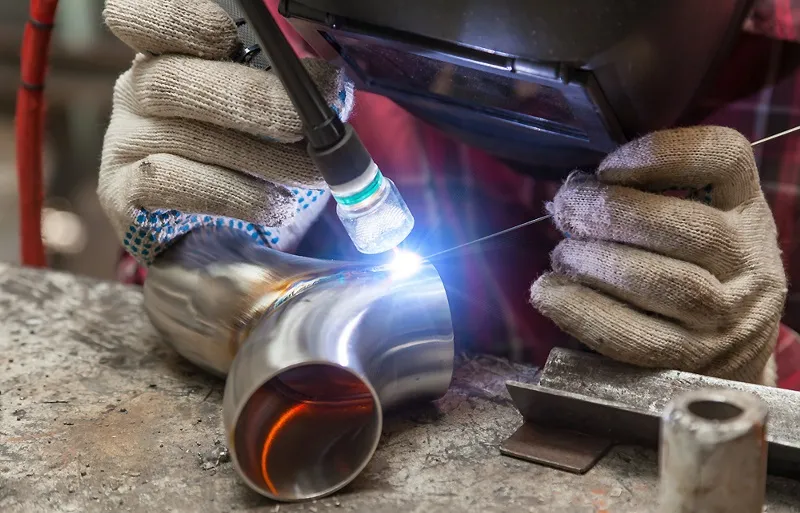Welding is a critical process in various industries, playing a pivotal role in the fabrication and construction of structures. To achieve high-quality welds, the choice of welding gas is crucial. Argon gas has emerged as a versatile and essential component in welding applications, particularly in processes like Tungsten Inert Gas (TIG) and Gas Metal Arc Welding (GMAW). This article explores the versatility of argon gas cylinders in welding and highlights their significance in ensuring optimal welding outcomes.
Argon Gas Characteristics:
Argon is an inert, colorless, and odorless gas that belongs to the noble gas group. Its chemical inertness makes it an ideal shielding gas in welding applications. With its low thermal conductivity, argon is particularly effective in minimizing heat distortion during the welding process. Additionally, argon is non-flammable, providing a safe environment for welding operations.
TIG Welding with Argon:
TIG welding, also known as Gas Tungsten Arc Welding (GTAW), relies on the use of a non-consumable tungsten electrode to produce precise and high-quality welds. Argon is the preferred shielding gas in TIG welding due to its stability and ability to protect the weld area from atmospheric contaminants. The inert nature of argon ensures that it does not react with the molten metal, resulting in clean and aesthetically pleasing welds.
GMAW Welding with Argon:
Gas Metal Arc Welding, commonly known as MIG welding, employs a consumable electrode and a continuous feeding of a shielding gas to protect the weld pool. While other gases like carbon dioxide or a mixture of argon and carbon dioxide are used in GMAW, pure argon is often chosen for specific applications. Argon’s low reactivity helps prevent oxidation of the molten metal, ensuring a strong and durable weld.
Versatility in Different Materials:
Argon’s versatility extends to its compatibility with various materials, including aluminum, stainless steel, and titanium. In TIG welding, argon is particularly well-suited for welding aluminum due to its ability to provide a stable and consistent arc. The use of argon in GMAW facilitates the welding of stainless steel, where the gas helps prevent the formation of unwanted oxides on the metal surface.
Advantages of Argon Gas Cylinders:
1. Inert Shielding: Argon’s inert nature ensures that it does not react with the weld pool, minimizing the risk of contamination and producing clean welds.
2. Reduced Heat Distortion: The low thermal conductivity of argon helps control heat input, reducing distortion in the welded material.
3. Versatile Applications: Argon is suitable for a wide range of materials and welding processes, making it a versatile choice for welders across different industries.
4. Safety: Argon is non-toxic and non-flammable, contributing to a safe working environment for welders.
Conclusion:
Argon gas cylinders have become indispensable tools in the welding industry, offering a range of benefits that contribute to the production of high-quality welds. Whether used in TIG or GMAW processes, argon’s inert properties, compatibility with various materials, and safety features make it a preferred choice among welders. As technology advances, the importance of argon gas in welding applications continues to grow, ensuring precision, efficiency, and safety in the fabrication of structures and components.

